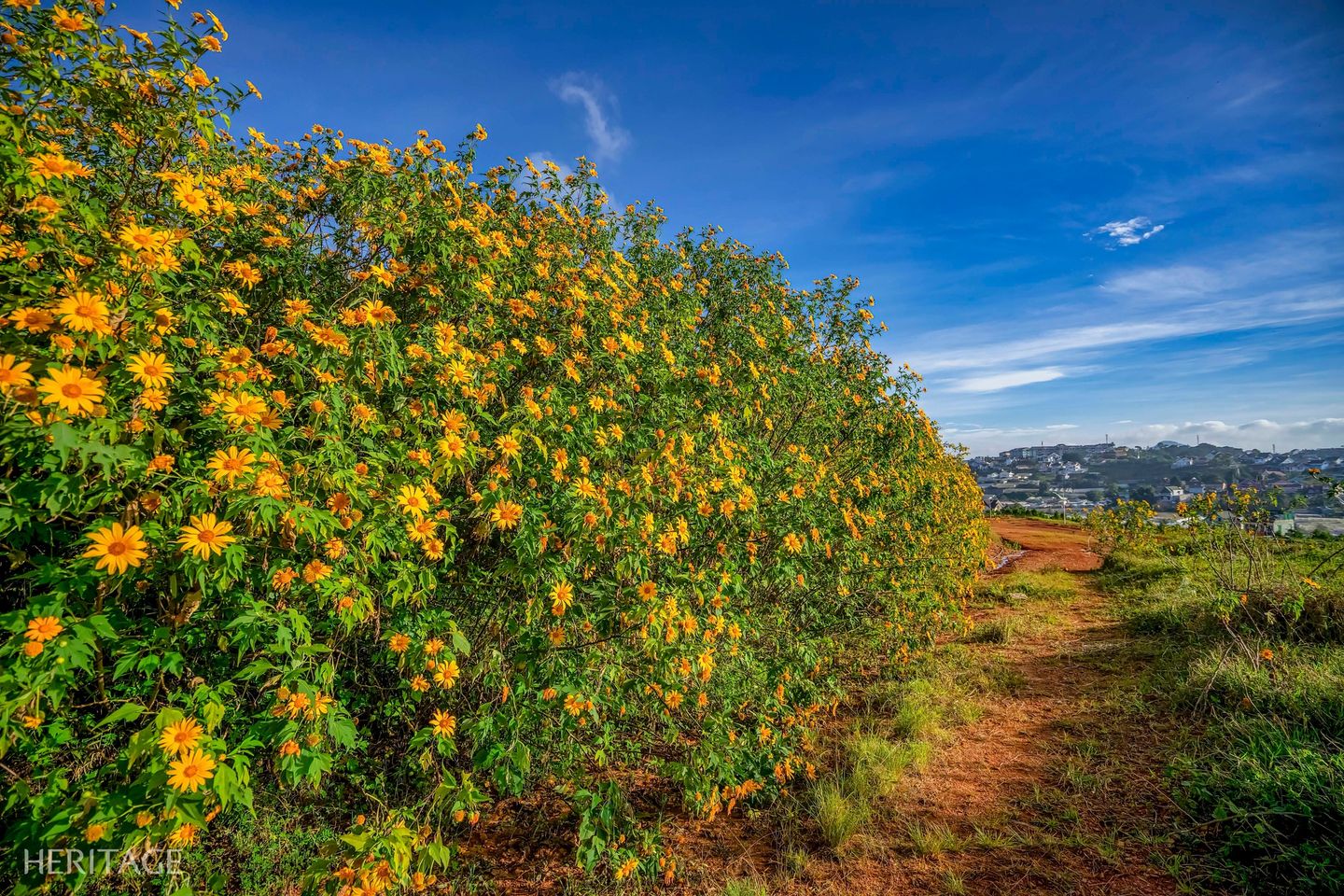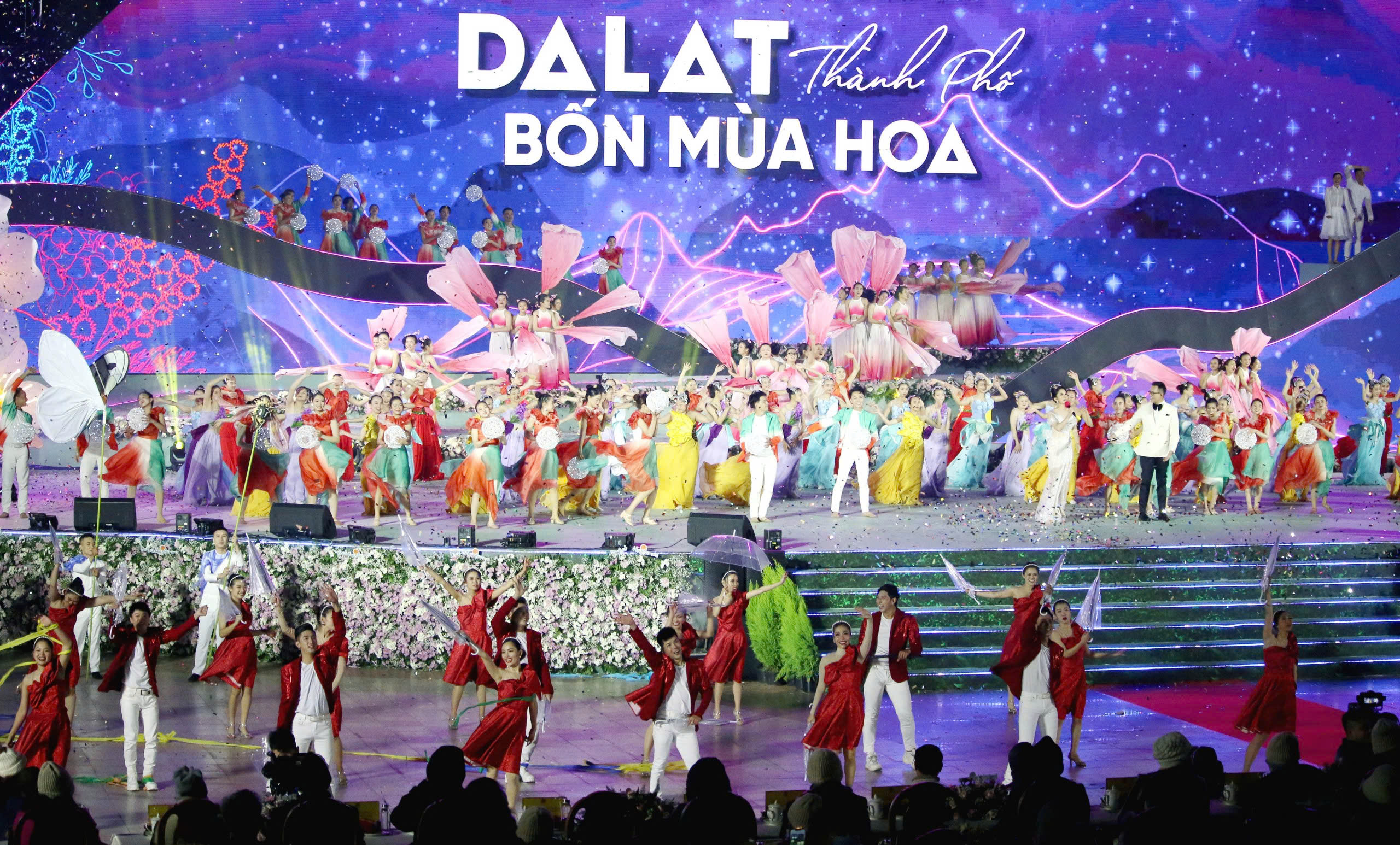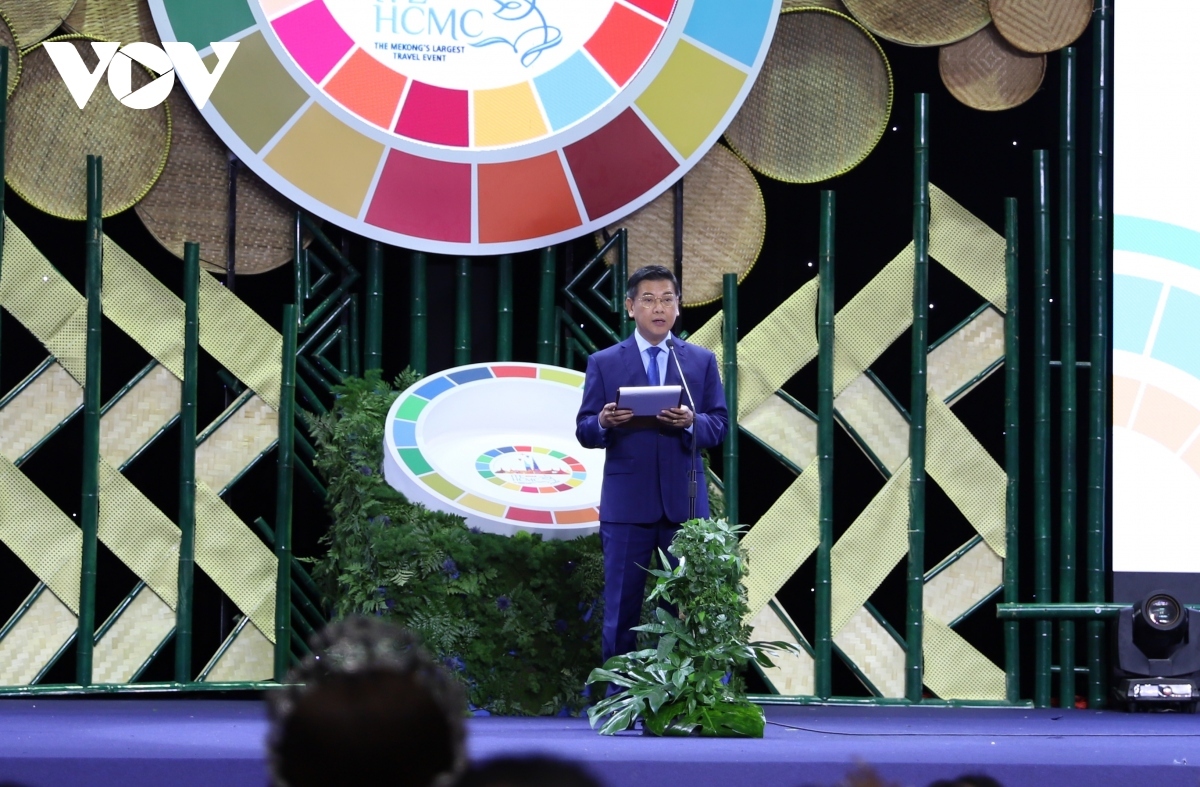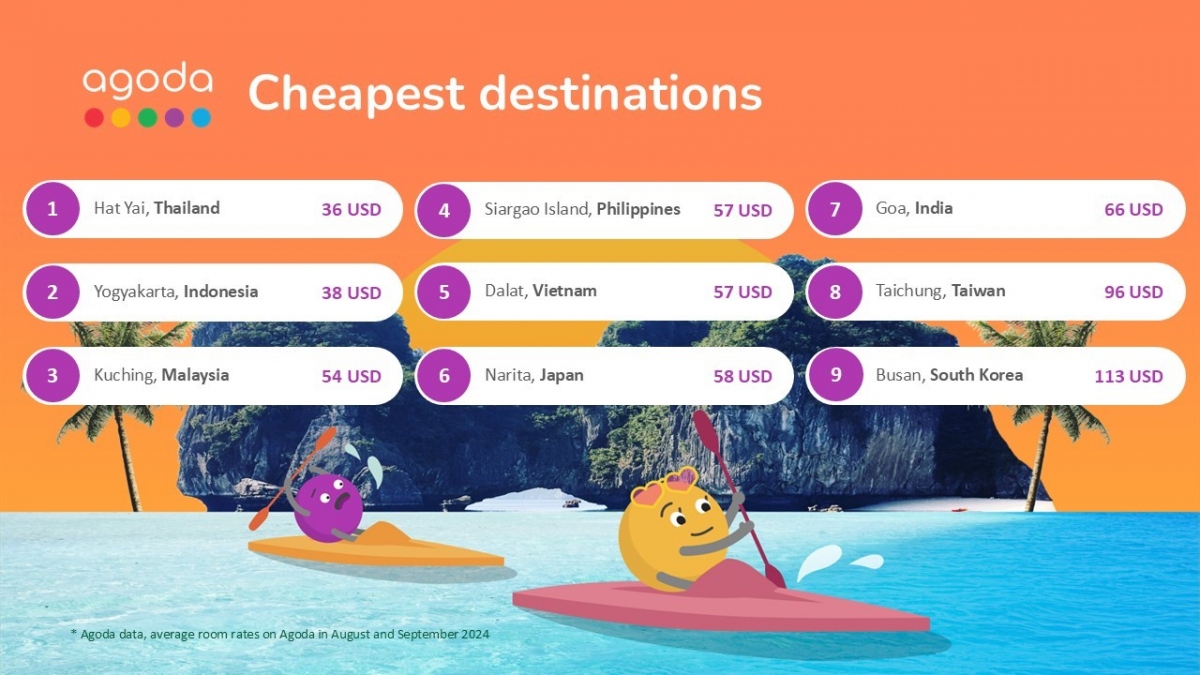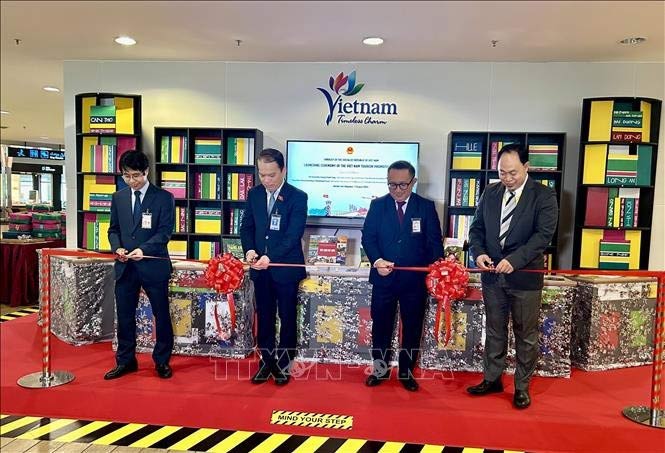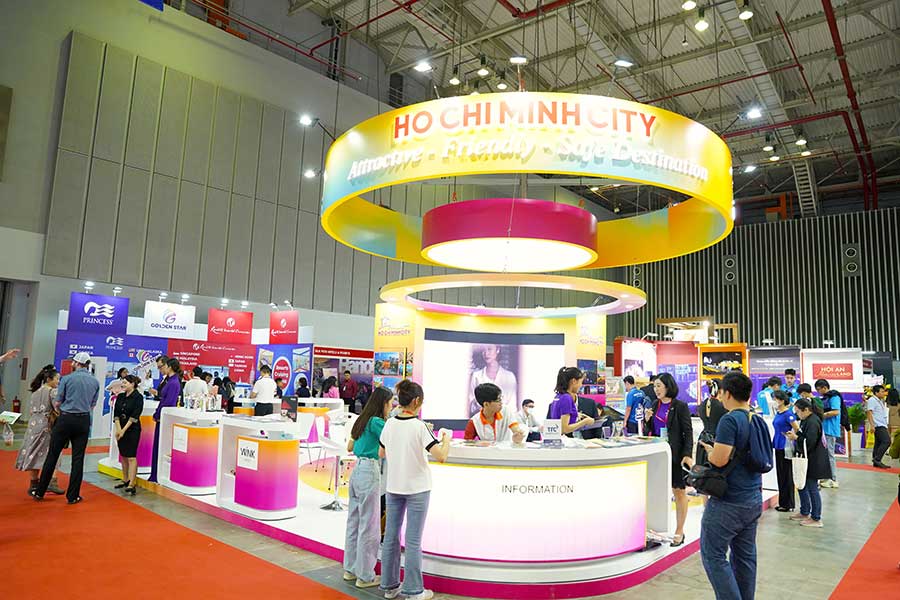The Central Highlands region has a total area of 54,641,069 km2, including 5 provinces: Kon Tum, Gia Lai, Dak Lak, Dak Nong and Lam Dong; population size in 2020 is about 6,211,500 people. The Central Highlands is a very diverse and rich land with a system of wild plateaus, a cool and fresh climate, beautiful natural scenery and waterfalls, mountains, springs, large lakes and rivers. There are many national reserves and biosphere reserves in the world, creating richness for the Central Highlands. These are extremely valuable resources for multi-sectoral and multi-sector economic development with specific characteristics that few economic regions have: forestry development; perennial industrial plants, vegetables, flowers, temperate and tropical fruits; medicinal plants, livestock raising and cold-water fish farming, mining industry, renewable energy, unique cultural diversity. The Central Highlands is also a promising land with a lot of potential to exploit various types of tourism such as eco-tourism, resort tourism, forest eco-experience tourism, cultural tourism, historical tourism, spiritual tourism. tourism, agricultural tourism and conference tourism.

Potentials and comparative advantages of the Central Highlands region
1/ Cultural resources of the Central Highlands have unique and special values. The Central Highlands is one of the major cultural regions of Vietnam, formed and developed thousands of years ago with diverse, unique and unique values. Ethnic minorities in the Central Highlands have a rich indigenous culture with unique writing culture, costumes, folk music, and unique culinary culture. The Central Highlands has many valuable tangible and intangible cultural heritages, such as stone instruments, gongs, and various types of folklore and community activities, creating a unique cultural treasure. Currently, the Central Highlands is home to many tangible and intangible cultural heritages that have both historical value and unique aesthetic value such as communal houses, long houses, stone altars and statues tombs, festivals and folklore treasures with epics, old stories, fables, rhymes, and folk tunes imbued with identity passed down through generations. One of the famous heritages is the Central Highlands gong cultural space which has been recognized by UNESCO as the representative intangible cultural heritage of humanity.
2/ Mineral resources. The Central Highlands is also a land with many precious minerals such as: Metallic minerals (tin, tungsten, gold, bauxite). The most significant is bauxite ore with a forecasted reserve of about 10 billion tons, accounting for 90% of the country's bauxite reserves, distributed mainly in Dak Nong, Lam Dong, Gia Lai Kon Tum; There are 21 gold spots with reserves of about 8.82 tons distributed in Kon Tum, Gia Lai and Lam Dong. Group of non-metallic minerals: kaolin, bentonite, diatomite (Lam Dong); In addition, there are precious stones, brick clay mines distributed in Chuse - Gia Lai and Ban Don - Dak Lak, peat and brown coal distributed in Bien Ho, Bua village, Ve village - Gia Lai, Chu Dang - Dak Lak and Lam Dong.
3/ Forest resources are the comparative advantage of the whole region. The area of land planned for forestry development is more than 3.2 million ha, accounting for 19.9% of the land area planned for forestry development in the whole country. According to the results of forest status announcement in 2018, the total forested area of the Central Highlands provinces is more than 2.55 million hectares, an increase of 3,502 hectares compared to 2017; forest coverage rate of the whole region reached 46.01%. Natural forests in the Central Highlands are distributed mainly in mountainous areas, where many ethnic minorities live, with traditional livelihoods, cultural and social practices associated with forests. Forest resources and forest land here are not only a special livelihood resource of the people of the Central Highlands, but also play an important role in protecting the ecological environment, social stability and national security and defense. However, deforestation and forest loss in the Central Highlands due to logging, land acquisition, conversion of use purposes, etc. have been causing serious decline in forest area and quality.
4/Resources in biodiversity and geology of national, regional and international level: Central Highlands forests are rich in reserves, diverse in types, timber forest reserves account for 35% of total timber forest reserves of the whole country. The forest area of the Central Highlands is 2,559,956 ha, accounting for 17.5% of the national forest area, with 19 important plateaus of the Central Highlands. The Central Highlands area currently has 06 National Parks, 10 Conservation Areas and 02 World Heritage Sites (Langbiang World Heritage Site and Kon Ha Nung Plateau Biosphere Reserve). Out of a total of 88 national parks, nature reserves, conservation areas and habitats and landscape protection zones, the Central Highlands region accounts for nearly a quarter of the country's ecological-biological diversity; Dak Nong Global Geopark, this is the longest and most beautiful volcanic cave system in Southeast Asia; Therefore, the requirement of preserving, conserving and promoting biodiversity and geopark is a big challenge and requires a very professional way of management by the responsible units and localities.
5/ Agricultural potential has conditions for comprehensive, sustainable and modern agricultural production. This is an area with good soil, suitable climate for the development of commodity crops. Of which, there are over 2 million hectares of agricultural land, including 850.1 thousand hectares of land for annual crops and nearly 1,151 million hectares of land for perennial crops… Especially, the Central Highlands provinces have basalt land area accounting for 74.25% of the total basalt land area of the country.
The Central Highlands region has the advantage of developing industrial crops, fruit trees and medicinal herbs. Thanks to the mild climate and fertile soil, mostly basalt red soil stretches from north to south in the whole region, so every province has an area of hundreds of thousands of hectares of basalt red soil; Therefore, the Central Highlands is one of the most crop-diverse agricultural regions in Vietnam with the scale of goods; very suitable for growing a variety of crops, especially long-term industrial crops: coffee, rubber, pepper, cashew, tea, mulberry, macadamia, fruit trees, vegetables, flowers and medicinal herbs; is an area with the strength to develop large cattle, buffalo, dairy cows and beef cattle, and also the region with the best strength in developing cold water fish in the country. Therefore, the Central Highlands is home to the main products of the country, many agricultural products participate in the global value chain, the most economic regions in Vietnam, with high market demand, with an export value of billions of USD per year contributing to improving the livelihood of ethnic minorities in the Central Highlands.
6/ Potential for tourism development. Thanks to the characteristic climate, beautiful natural landscape, there are many scenic spots at national and provincial levels, a system of rivers and streams passing through, there are many multi-functional lakes, and diverse cultural features of ethnic groups; Therefore, the Central Highlands has a lot of potential for tourism development. However, up to now, tourism has not developed evenly among localities, currently mainly in Lam Dong and Dak Lak, Dak Nong, so this place still remains intact. With the inherent wild beauty with many beautiful check-in points, visitors can immerse in the majesty of the nature here and feel the breath of the fresh mountains and forests, the clear and cool air is always charming and attractive to tourists especially on hot summer days.
7/ Development of Renewable Energy. Thanks to the highland terrain and many waterfalls, the region's hydroelectric resources are large and are used more efficiently. The whole region with the large hydroelectric plants Da Nhim (160,000 kW) on Da Nhim river (upstream of Dong Nai river), Dray H'inh (12,000 kW) on Serepok river; Yaly hydropower project (700,000 kW) has brought electricity to the grid since 2000. Currently, the whole region has hundreds of hydropower plants throughout the Central Highlands provinces. In addition to hydropower potential, the Central Highlands is also an area with advantages of wind energy and solar energy, which is focusing on investment and operation in the near future.
8/Climate potential. Located in the Tropical Savanna, the climate in the Central Highlands is divided into two seasons: the rainy season from May to the end of October and the dry season from November to April, in which March and May are the two hottest and driest months. Due to the influence of altitude, in the highlands with an altitude of 400–500 m, the climate is relatively cool and rainy, especially in the highlands with an altitude of 900 -1500 m, the climate is cool all year round, especially points of high mountain climate such as Langbang plateau, Di Linh plateau; The Central Highlands has an evenly distributed rainfall throughout the year, so it has good aquatic life and abundant surface water, which is very convenient for agricultural development. climate change vulnerability compared to other regions, especially Lam Dong and Dak Nong provinces;
9/ Unique natural and man-made landscapes. The Central Highlands has many river systems flowing through provinces such as Serepok River, Se San River, Dong Nai River....creating a beautiful natural landscape. Therefore, the Central Highlands possesses many advantages to develop tourism economy. The Central Highlands has a beautiful landscape thanks to a forest ecosystem, a system of rivers and streams interspersed with industrial orchards and fruit trees creating a immense green patch. The open space landscape routes along the Dong Nai River, the Serepok River, hydroelectric lakes, irrigation lakes along natural streams with many beautiful landscapes can be exploited for tourism all year round. The Central Highlands has diverse topography, the altitude fluctuates greatly, the average altitude above sea level fluctuates from 450 -2300m, especially with gentle hilly terrain, so it is very convenient for both development. The city has a beautiful urban design, both sustainable agricultural development and unique and rare urban development in the direction of green urban villages, smart ecological urban areas, garden villas... respond to future climate change.
Limitations affecting the sustainable development of the Central Highlands
In the past time, the Party committees and governments at all levels in the Central Highlands provinces have focused on leading, directing, and concentrating all resources on population development, but the most core value brought in the practice of social life is focus on building the national target program on building a new countryside, through which many localities have a high percentage of district-level units achieving new rural areas such as Lam Dong 58%. It can be said that this result is a result of the persistent efforts of all levels of Party committees, authorities and political systems at all levels, the business community and especially the contribution and efforts of the entire people of all ethnic groups in Vietnam. Central Highlands provinces in recent years, creating conditions for the Central Highlands to rise to new heights, meeting the requirements of new tasks. However, in the process of socio-economic development, there are still difficulties and limitations that need to be overcome in the coming time, which are: (1) transport infrastructure has not met development requirements, so logistics costs are high compared to economic regions, this is one of the reasons for limiting regional linkage; (2) Rural population development is not according to planning, urban development is slower than potential; (3) the rate of poor households is still high; (4) Tourism orientation is not systematic, methodical, unprofessional with a long-term vision, and there is a lack of tourism in the form of cultural tourism, high-class resort tourism; (5) The management of exploitation mineral resources are still inadequate, affecting the environment, unsustainable; (6) Agricultural development has not been commensurate with the potential of climate and land; (7) The management and protection of forests is limited, forest resources are lost and biodiversity is seriously degraded.
Some solutions for sustainable development linking the Central Highlands region to implement Resolution No. 23-NQ/TW in the trend of international integration in the period of 2022-2030 and vision to 2045
On the basis of potential comparative advantages, identifying existing limitations, we propose basic solutions to exploit the potential to create breakthroughs in regional linkages in the future.
1/ Manage resources, exploit potential climate, land, forest resources, mineral resources. Focus on reviewing the licensing and mining in a sustainable way; define and control zoning on environmental impacts for the following areas: strictly protected areas, absolutely no impact; areas where works can be built (urban areas, residential areas, public production, agriculture, mining, tourism, accommodation, commerce,...);
Effectively implement solutions to protect the environment after mineral extraction according to regulations; encourage the use of clean, energy-saving fuels. Regular embellishment of routes; organize the collection and treatment of wastewater and solid waste according to regulations;
Effectively implement plans on planning, afforestation, care and protection of forests. Increase the planting of grass and trees to create landscape and ecological environment for urban areas and rural residential areas. Focusing on doing well the planning of three types of forests, reviewing the areas of land that people have been cultivating for a long time without committing administrative violations on forest management and protection, the localities shall organize the grant of LURCs to the people in order to create favorable conditions for them to develop production, reduce poverty and get rich from sustainable agriculture.
2/Đào tạo phát triển nguồn nhân lực, đặc biệt là nguồn nhân lực chất lượng cao Như đã phân tích nêu trên, dân số toàn vùng năm 2020 vào khoảng 6.211.500 người, dự báo đến năm 2030 quy mô dân số toàn vùng khoảng 7.390.600 người. Để có dân số này ngoài việc tăng dân số tự nhiên thì tăng dân số cơ học dự báo trong thời gian tới là khá lớn; đây là nguồn nhân lực khá dồi dào, vấn đề còn lại các địa phương cần tiến hành nhiều giải pháp đào tạo phát triển nguồn nhân lực chất lượng cao. Trước hết tập trung chăm lo công tác giáo dục đào tạo; phát huy tốt công tác khuyến học, khuyến tài để đào tạo nguồn nhân lực từ các cấp học phổ thông; phát hiện công chức, viên chức trẻ có nhiều triển vọng để đào tạo trình độ chuyên và lý luận; đồng thời thu hút các nguồn nhân lực có kiến thức chuyên môn sâu, có trình độ quản trị giỏi ở các địa phương khác có tâm huyết với quá trình phát triển của vùng Tây Nguyên trong tương lai; đồng thời tổ chức quán triệt
2/ Training and development of human resources, especially high-quality human resources. As analyzed above, the population of the whole region in 2020 will be about 6,211,500 people, it is forecasted that by 2030, the population size of the whole region will be about 7,390,600 people. In order to have this population in addition to the natural population growth, the forecasted mechanical population growth in the near future is quite large; this is an abundant human resource, the remaining problem is that localities need to conduct many solutions to train and develop high-quality human resources. First of all, focus on taking care of education and training; promote well study and talent promotion to train human resources from all levels of general education; discovering young civil servants and public employees with great potential for professional and theoretical training; at the same time, attract human resources with deep professional knowledge and good management qualifications in other localities who are enthusiastic about the development process of the Central Highlands in the future
3/ Strongly develop science and technology. Reviewing all industries and fields to clearly identify weaknesses and deficiencies and stages that need supports from scientific and technological. Focus on synchronous investment of resources (financial, human, material ...), identifying science and technology to create breakthroughs in socio-economic development; strongly apply the 4.0 industrial revolution; maximum implementation of digital transformation in all industries and fields; enhance innovation in all socio-economic activities. In the process of direction and administration, it is necessary to have a guiding view "Science becomes a direct productive force in the process of socio-economic development of the whole region with a long-term vision";
4/ Invest in traffic infrastructure to create breakthroughs in regional connectivity. Concentrate resources on developing traffic infrastructure. For airways, invest in upgrading airports to reach grade 4E airport (according to standard code of International Civil Aviation Organization - ICAO); Accordingly, Lien Khuong - Da Lat airport will be upgraded to become an international airport by 2022; Buon Ma Thuot airport will become an international airport before the year 2030 -2050. For roads, in the immediate period 2021-2025, to upgrade national highways 14, 19, 26, 27, 28, 29; in the period of 2025 -2050, continue to invest resources to build Khanh Hoa - Dak Lak inter-regional expressways. For railways, restore the railway line Phan Rang, Thap Cham - Da Lat in the period of 2025-2030 and build a new railway connecting Phu Yen and the South Central and Central Highlands provinces in the period after 2030 to gradually overcome the high cost of transporting agricultural products. In particular, the state needs to invest with great resources to develop border gates in the Central Highlands provinces with Cambodia and Laos (except Lam Dong); if resources are concentrated to implement the above-mentioned infrastructure projects, the Central Highlands will exploit the breakthrough economic development potentials in general and the agro-forestry industry in particular.
There will soon be a solution to synchronize the implementation of Decision No. 1454/QD-TTg dated September 1, 2021 of the Prime Minister on approving the road network planning for the period 2021-2030, with a vision to 2050 such as: Dau Giay - Lien Khuong expressway, Nha Trang - Da Lat expressway, Lien Khuong - Buon Ma Thuot expressway; exploiting the East Truong Son road and upgrading and expanding National Highway 55 to meet the tourism and freight transport capacity in the South Central Coast and the Southeast and Southwest provinces.
5/ Agricultural development adapting to climate change and international integration. To have synchronous solutions to optimally exploit climate and land potentials for comprehensive, modern and sustainable agricultural development; focus on developing high-tech applied agriculture, smart agriculture, organic agriculture and circular agriculture. To solve this problem, the Central Highlands provinces need to drastically implement a scheme to restructure the agricultural sector. One of the contents that must be restructured is to strongly switch from small-scale production to commodity production scale, linking value chains; If we continue to organize well production, apply science and technology, the spearhead is high-tech agriculture, smart agriculture and organic agriculture to exploit the ceiling of crop and material productivity farming, doing good post-harvest technology, attracting agricultural product processing projects to solve synchronously developing material areas and processing technology in a scientific way, in the future, Central Highlands agriculture will be at the top. The whole country will become an economic region with many agricultural products participating in high-value global value chains.
6/ Develop green tourism. Look for a synchronous solution, strengthen the image of homeland, country and people in the Central Highlands to develop green tourism; diversifying forms of tourism has advantages, especially tourism to discover nature, cultural tourism, educational tourism, convalescence tourism, agricultural tourism and tourism under the forest canopy... develop landscape tourism at hydroelectric and irrigation lakes such as: Ta Dung lake (Dak Nong); Dan Kia Lake - Stream tourist area, Tuyen Lam Vang lake national tourist area (Lam Dong); Lak Lake (Dak Lak); Bien Ho (Gia Lai)... and models of cultivation, production, harvesting and processing of mulberry tea and coffee, exploiting and experiencing tourism.
Cultural values in the Central Highlands are also reflected in the experience of taming elephants, in traditional medicines for treating diseases, in bronze casting techniques to make stone instruments and gong musical instruments. Carving through statues of the tombs of the Gia Rai, Bana, Ede, and Mnong ethnic groups is a decorative technique that weaves patterns of ethnic costumes, a heroic spirit, and great wisdom through legends. Dam San, Xing Nha, Dia Don, as well as modern-day heroes such as the hero Nap, the hero No Trang Long... Gathered in the villages of Kong Hoa, Ban Don, in the victory of An Khe, Plei Me, Buon Ma Thuat, Sa Thay, Dak To, Dak Nong, Dak Min. The spiritual value remains 200 customs of the Ede people, 100 customs of the Mnong people and thousands of customs of the Gia Rai, Bana, Gie Trieng, Ro Ngao, Xe Dang, K'Ho.... behavior in the community, through food, accommodation, clothing, entertainment, in weddings, funerals, rituals, beliefs and religions, it is necessary to continue to exploit this unique cultural tourism value.
7/ Development of irrigation infrastructure in the Central Highlands to meet agricultural production adaptation to climate change. According to the climate change scenario in the Central Highlands, there are many interesting forecasts: about temperature: Temperature The average regional average tends to increase over time to 2050 from 0.5-1.24°C depending on the province. About rain: The average annual rainfall in the whole region tends to increase over time. It will increase about 7.8 mm in 2020 and about 25.3 mm in 2050 compared to 2010. Currently, the whole Central Highlands has built 2,354 irrigation works; in which there are 1,190 reservoirs, 972 weirs, 130 pumping stations and 62 other works to ensure the irrigation capacity for nearly 290,000 ha of crops. However, in fact, only about 214,645 ha were irrigated, meeting more than 20% of the irrigation needs of the whole region. In the face of increasingly severe climate change and the forecast that the drought cycle will be shorter than 10 years ago, it is necessary to have a solution to implement the irrigation master plan in the Central Highlands in the period of 2030, with orientation to 2050, approved by the Ministry of Agriculture and Rural Development in Decision No. 4325/QD-BNN-TCTL dated November 2, 2018; with a total cost of implementing the plan about 103,224 billion VND.
8/ Develop smart eco-city in line with the development trend of the times. There are synchronous solutions for local implementation on the approval of the provincial construction planning to 2035 and a vision to 2050; with the goal of developing the Central Highlands provinces to ensure comprehensiveness, harmony and sustainability in the fields of economy, social security, national defense, security and environmental protection; to build a synchronous provincial infrastructure system to create a driving force for regional socio-economic development; in which, focusing on developing strengths in geographical location, natural resources and cultural identity to develop eco-tourism, mixed tourism and trade and service; to comprehensively develop the fields of culture, society, civilized urban areas and model new rural areas, improve the quality of human resources and the lives of people in the Central Highlands. Organizing investment promotion conferences to attract future smart eco-urban development projects
9/ Attract investment. In the coming time, the Central Highlands provinces will have a more drastic and synchronous solution to promote the image of the homeland and people of the Central Highlands in order to selectively attract strategic investors for projects in the following areas: development of high-tech agriculture, organic agriculture, and circular agriculture; agricultural product processing industry; mineral industry; recycled energy; high-quality tourism; develop eco-smart cities; development of convenient residential areas; green urban village; develop cultural industries and attract international education projects.
Through the above analysis, it is shown that the Central Highlands is a land of great potential. In recent years, localities have had many creative solutions in the process of socio-economic development to achieve certain results, but have not yet fully exploited such potential. Therefore, in order to meet the requirements of sustainable development in line with the trend of the times, it is imperative that the Central Highlands have synchronous and drastic solutions in the process of implementing Resolution No. 23-NQ/TW, focusing on regional linkage in order to exploit potential advantages to create breakthroughs in the Central Highlands in the future.
Dr. Pham S
Vice Chairman of Lam Dong Provincial People's Committee



